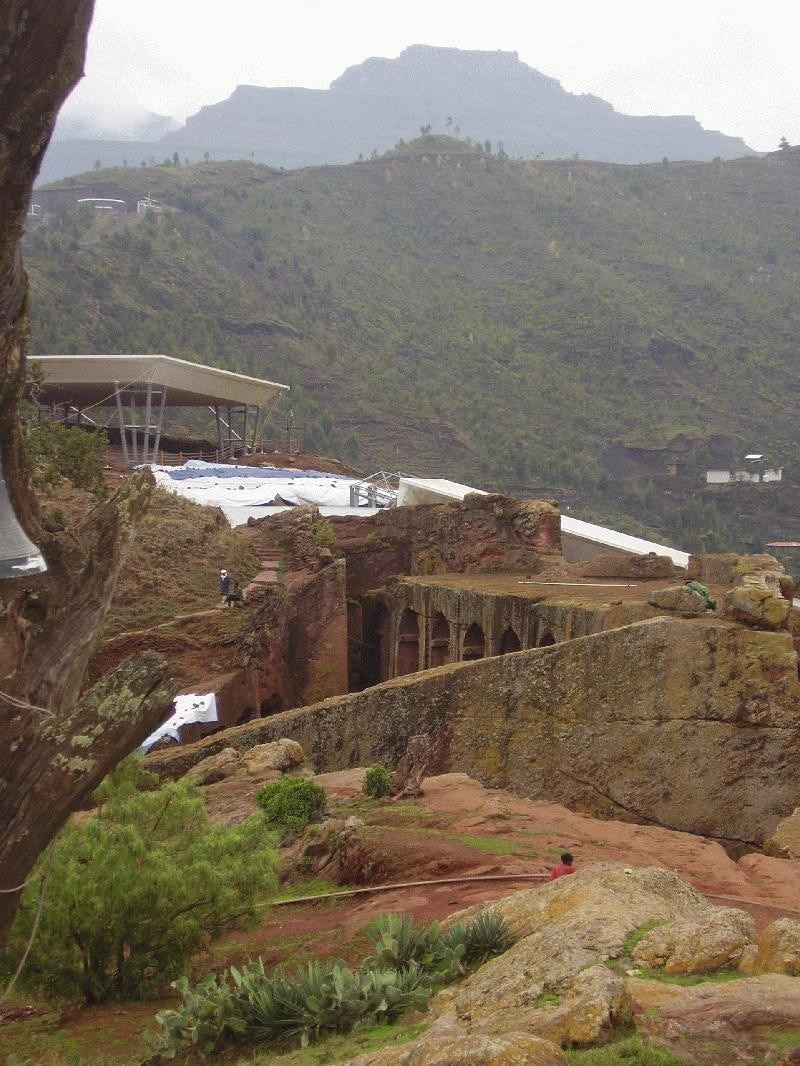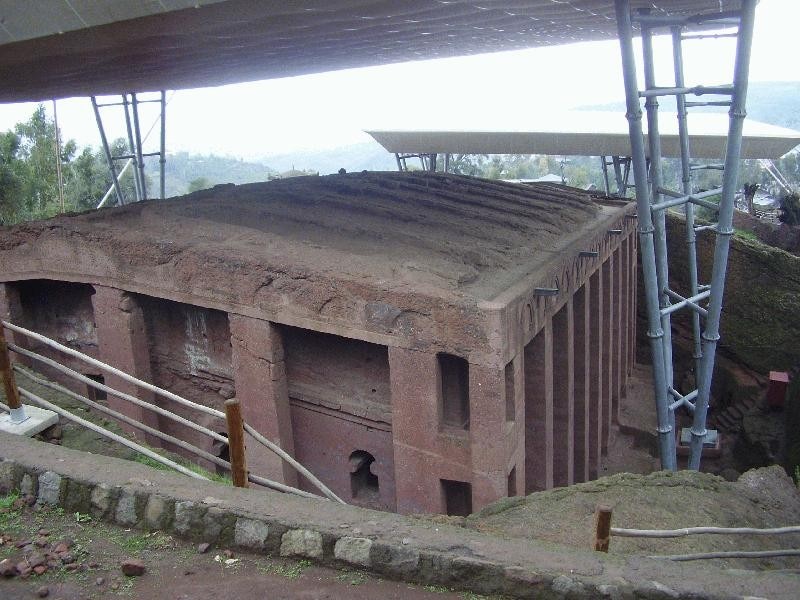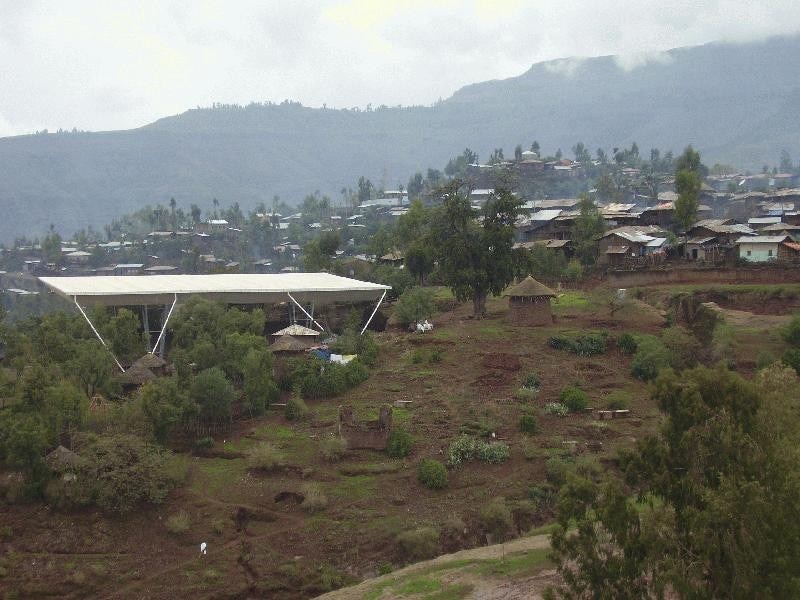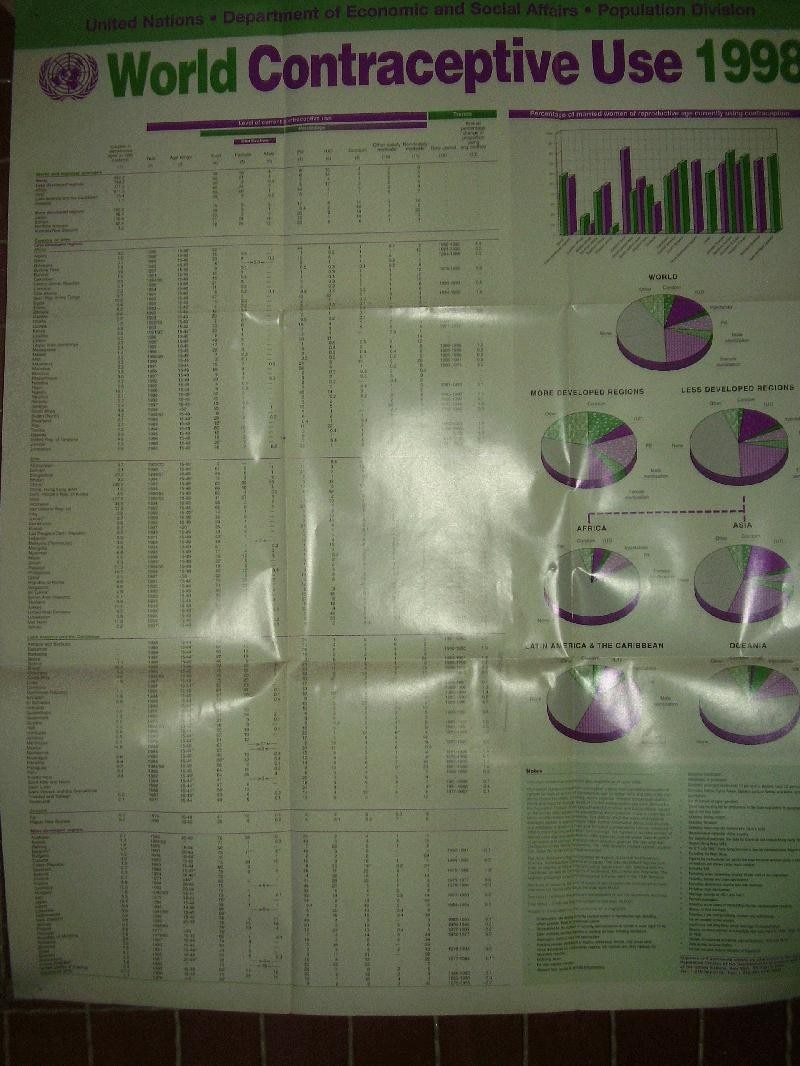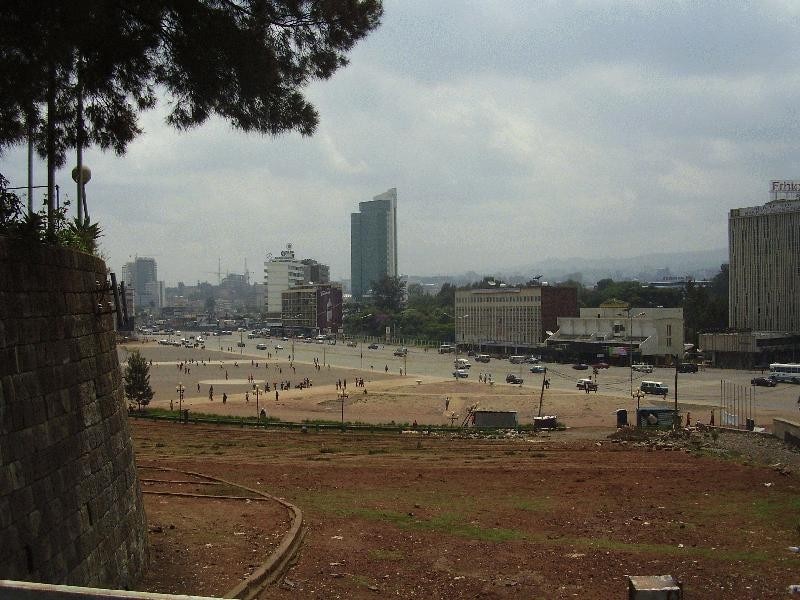Fig. 1. Meskal Square in the central area of Addis Ababa. High-rise buildings scattered at a distance from one another in greenery, among smaller houses, providing for pictoresque views.
Fig. 2. Alexander Pushkin - Russian poet with Ethiopian ancestry, in front of the National Museum in Addis Ababa, a former palace constructed in a historic style early in the 20th century.
Fig. 3-5. Lalibela: a World Heritage site. Modern roofing over the rock-hewn churches from the 12-13th centuries, surrounded by round traditional houses and some newer buildings: fascinating contrast.
Fig. 6-7. The Castle of Gondar with the Fasilidas' Palace (fig. 6, right) and the palace of Mantewab (fig. 7) within the former Royal Enclosure, constructed in the 17-18th centuries with participation of European and Indian architects.
Fig. 8. Saturday market in Lalibela.
Fig. 9-10. Posters on demography are exposed in the Addis Ababa University Library: Ethiopian intelligentsia is aware of the demographic challenge.
Tenfold increase of population density in Ethiopia during last century, in spite of successful land rehabilitation and water conservation measures [1], resulted in problems threatening agricultural development and food supply. Soil erosion cannot be overseen: ravines are growing particularly in the fertile highlands in the north of the country. Yields have not increased sufficiently to compensate for the reduction in per capita cropland [2], and food supply from abroad remains vital (fig. 9). A consequence of excessive birth rate - unemployment especially among young people - is clearly visible, for example, in the crowded Mercato area of Addis-Ababa.
The theme of overpopulation is unseparable from urban design, manifesting itself by growing agglomerations, occupying more and more territory, creeping into mountainous areas along the valleys (in Ethiopia not yet). It should be noted that, in view of the growing energy prices, many-storied residential houses are more economical than individual cottages.
Global overpopulation leads to poverty, overcrowding, pollution of air and water. These factors, together with increasing unemployment and food shortage, will decrease the quality of life for millions of people [3]. According to some prognoses, the countries, which are still above replacement, will not spontaneously go below replacement fertility in foreseeable future [4]. Ecological damage and depletion of unrenewable resources are proportional to population size [5,6]. So far, food production has been able to keep pace with population growth, but such production cannot increase infinitely without soil erosion, deforestation and other environmental consequences [7]. Humankind can choose to check population growth by reducing the birth-rate instead of raising the death-rate [8], as has been common throughout history. Humanity is approaching a demographic cul de sac, but no feasible and efficient overpopulation solution has been proposed. Proposals mainly address reduction of the affluence and technology, but not of the population quantity. Reducing consumption is only a palliative, since populations are growing faster than affluence [6]. An effective solution would require a revision of some ethical clichés, according to which procreation is an inherent human right. New ethical principles must be propagated instead: no population group, whether national or international, should obtain any advantages because of its numerical size. Without procreative competition, different peoples will more likely live in peace and help each other. In the age of global conflicts, high fertility was sometimes propagandized to replenish military and manpower resources. Overpopulation control has been obfuscated by conflicting national and global interests: population growth has been regarded as a means of national sovereignty and economic advance. However, with increasing globalization, the community of interests of all mankind becomes evident. Global birth control would require investments and managerial efforts; but all simpler and less expensive solutions would inevitably be less humane. As a source of financing, oil revenues, which are sometimes spent in an unproductive and wasteful manner, could be used. Globalised mankind will be able to create priorities for addressing overpopulation. Modern technology can guarantee good quality of life for everybody.
References:
1. Nyssen, J., Haile., M, Naudts, J. et al. Desertification? Northern Ethiopia re-photographed after 140 years. The Science of The Total Environment, 2009; 407:2749-55.
2. Amsalu A, Stroosnijder L., de Graaff J. Long-term dynamics in land resource use and the driving forces in the Beressa watershed, highlands of Ethiopia. Journal of Environmental Management, 2007; 83:448-59.
3. Robey B. Asia's demographic future: the next 20 years. Asia-Pacific Population and Policy, 1990; (14):1-4.
4. Lutz W, Qiang R. Determinants of human population growth. Philosophical transactions of the Royal Society of London. Series B, 2002; 357:1197-210.
5. van Niekerk J.P. de V. Humans - a threat to humanity. South African Medical Journal, 2008; 98:163.
6. Desvaux M. The sustainability of human populations: How many people can live on earth? Significance, 2007; September: 102-7.
http://www.optimumpopulation.org/HowManyPeople.pdf
7. Reddy PH. India in the demographic trap. Janasamkhya, 1989; (2):93-102.
8. Russell C, Russell WM. Population crises and population cycles. Medicine, conflict, and survival, 2000, 16:383-410.

